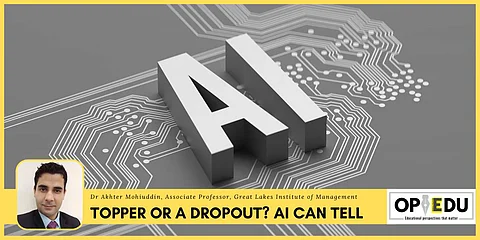

Retention of students is an issue for academic institutions across the globe, given limited resources and tight budgets. In some countries, the average dropout rate is around 45%. Accordingly, measures are being taken to find a solution to this problem. Experts say that such strategies are most effective if applied in a student’s first year of the opted course.
The importance of artificial intelligence (AI) and machine learning (ML) can be vital here. Using AI-enabled devices, instructors can suit everyone's needs and requirements on a case-by-case basis which means each learner gets desired attention. AI in education is an emerging field that can be broadly classified into two subfields: Educational Data Mining and Learning Analytics.
Educational data mining helps learners learn and identify the settings where they perform well, as well as give deeper insights into the understanding of educational phenomena. In the future, AI-enabled applications will become common in universities that will integrate with other techniques to “track” the behavior of students, for instance finding the student’s risk of abandoning their studies so that timely action can be taken.
To keep track of students and courses, educational institutions retain vast amounts of data. The data contains information about students, their grades, faculty performance, etc. This data is very precious for the process of data mining in the educational sector as it serves as the basis for training any AI-ML model. Educational institutions that have adopted AI-ML have observed an increase in their efficiency because of the timely decisions taken by them.
Learning analytics is a new realm in education concerning AI, that can be considered as “data collection about learners, analysing it, and reporting learners and their contexts.” The goal is to understand and optimise learning and make this field more efficient. This involves using data visualisation, social network analysis, modelling and prediction of educational data using AI-ML techniques.
The challenge for academic institutions is the low performance when a significant number of students try hard to manage their studies and are forced to change their majors, or dismissed from the program, or have their graduation delayed. Teaching practices that are enabled with technology identify struggling students and produce rich data to detect at-risk students and find solutions for them. Besides improving the accuracy of prediction of AI-ML models, it is very important to improve the accuracy of prediction of failing students, who require immediate attention and support.
To handle at-risk students, the traditional approach which most educational institutions have been following is to collect the data about learners and work towards remediation. The actions could be in the form of moral and psychological support, counselling, mock tests, etc. The new generation is growing up with AI-ML-based learning systems; therefore, this is the need of an hour for an education system that prepares students for the data-driven society in which they live.
Dr Akhter Mohiuddin is an Associate Professor of Data Sciences, Great Lakes Institute of Management, Gurgaon. Views expressed here are his own
